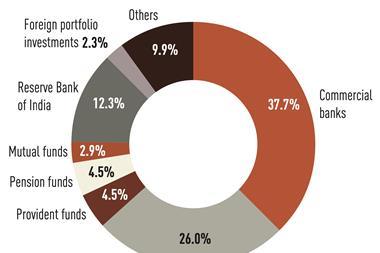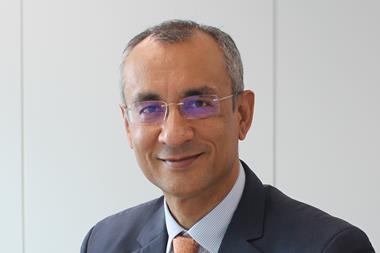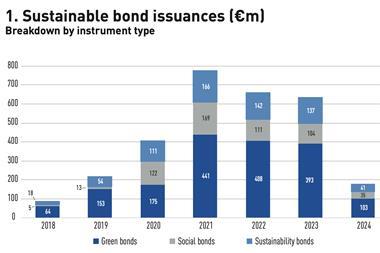“Money is finding its way to Asia right now,” says Ridha Wirakusumah, Director at global private equity investor KKR. He says everyone wants to be part of the Asian success story and investing in the region is increasingly been seen as a long-term solution for institutions seeking returns to meet liabilities.
“For your pension money from the US or Europe, where do you invest?,” says Wirakusumah. “Do you invest in the western developed nations or do you come to Asia?” he told participants at the Pacific Pension Institute’s annual Asian Pension Roundtable, being held this year in Jakarta.
“I’m actually an Asian bull for the long-term,” says Wirakusumah. Asian governments put enormous thought into policy and have become smarter in strengthening controls to stem the tide of hot money into the region’s capital markets, he adds.
The Canadian Pension Plan Investment Board is currently underweight for Asia and recognises it needs to do more, says Senior Portfolio Manager Ted Lee. “Today we have over $20bn in the Asian region, but then again, it’s a $175bn pension fund, so that’s about 12% of our portfolio. We have to do a lot more.
“We’re recognising that change is happening globally and part of it relates to being aware of where the growth is going to be. We’re asking ourselves on a regular basis on what the world will look like in the next five, 10, 15 years from now and preparing our asset allocation, our resources and infrastructure to address what the world would look like in that view.”
Lee says the CPP Investment Board, looking into its exposure in Asia, finds that it needs to have a physical presence in the region to aid its investment in the private equity and real estate markets, “areas that do require a lot of direct interaction and direct relationships”.
Canada’s Public Sector Pension Investment Board believes in taping local partners and expertise for its investments in emerging markets including Asia, says President and CEO Gordon Fyfe. PSP, being a “young fund” - with a lot more employees contributing rather than retiring - receives cash inflows of about $5bn-$6bn annually. “This has a huge impact on what kind of exposure we want.
“In general, my fund is a young fund and we need growth and we need the demographics that match the demographics of our fund. In developing economies, we have the demographics. So we’re buying the demographics elsewhere by investing in these higher-growth markets, we don’t need the cash flow.”
With payouts getting bigger than revenues, Japanese pension funds are also taking steps to diversify their holdings. The Government Pension Investment Fund is likely to start looking seriously at investing in alternative assets from next April, when its new fiscal year begins. GPIF has typically invested only in traditional asset classes and more than two-thirds of its investments are in domestic bonds. It started to invest in emerging markets this year.
The Japanese pension fund is currently forming a research team to conduct a feasibility study on allocations into alternatives. This would include private equity and infrastructure, according to Tokiko Shimizu, Director-General, Research Department on Investment Policy. The feasibility study will likely take 5-6 months to complete, he says, adding GPIF’s investment committee is likely to receive the report by next April. “We will then start debating about alternative investments.”
South Korea’s National Pension Service, which is facing a country demographic trend of fast-aging population and low birthrates, is pushed to rebalance its allocation, moving into overseas equities and real physical assets, according to Lee Soocheol, Head of Global Equities Team. “We’re very young and still growing. We have very little experience in cross-border investment including emerging markets.
NPS in the last five years made a “substantial transition” in the allocation of its funds, including moving more into risky assets, he adds. The fund’s equity investment has doubled from 10-12% to 20-24%, and cross-border equity also increased from below 1% to 6-7%. NPS uses MSCI All Country Index as a benchmark even though emerging markets accounts for just 12-13% of the benchmark but the liquidity accounts for 50%, Lee says. “During our transition, we are accumulating our investment experience and capabilities.
“We have diversified our investment style and we started with regional emerging markets, emerging Asia and then move to Latin America. We also began investing in China’s A-shares.”
Lee adds: “We’re more familiar in emerging markets, we’re more comfortable. From the perspective of cultural aspects, we feel there’re more similarities with emerging markets than coming from some western developed countries.”
Another way to get exposure to emerging markets, from an risk-return perspective, is to look at the eco-system of an investment idea or sectors, says Guan-Seng Khoo, Vice President for Risk Management at Alberta Investment Management Corp. Potash is one example, he adds. “The two biggest clients of potash are China and India.”
“In the case of food and fertilisers, if there is a good proximity to China and India, this is one way of investing, not only from geographical basis but also sector basis.”
Investing in emerging markets does carry some risks, NPS’ Lee says. “It’s relative high risk compared with developed markets, but we are long term investors. We have some very long-term horizons. If you’re a long term investor, you can focus on specific areas, like Southeast Asia funds or emerging Asia funds and on demographics.
“Japan has decreasing labour force, and so is China, Taiwan, but for several Southeast Asia countries for the next 5-10 years, their labour force will grow. It means there is a source of growth in Southeast Asian countries, we’re seeing that growth.
Lee adds: “The main argument for us in emerging markets, in emerging Asia is that there will be growth.” – Wing-Gar Cheng












No comments yet